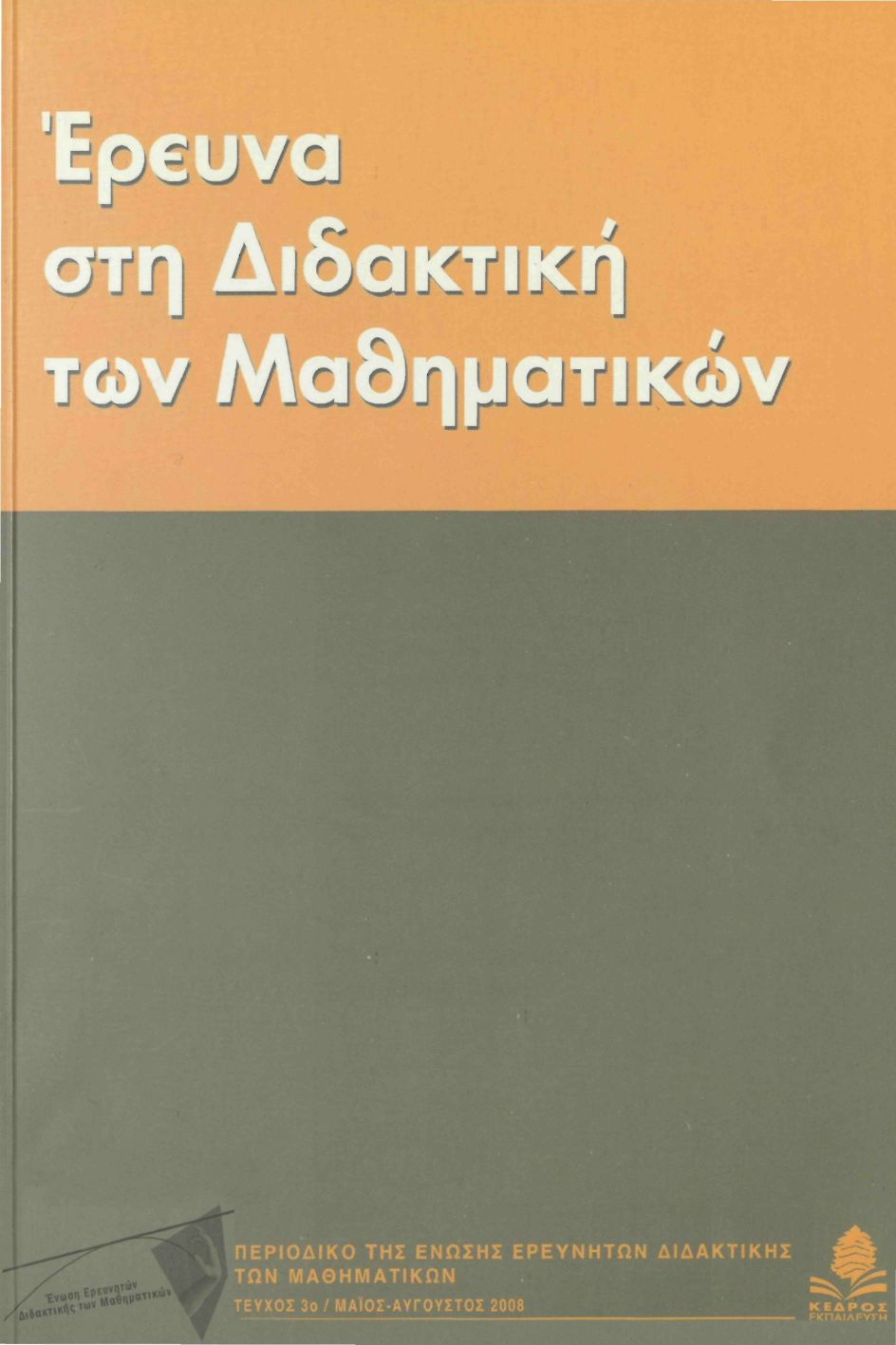SCHEMES OF DYNAMIC MANIPULATION OF GEOMETRIC CONSTRUCTIONS AND DEVELOPMENT OF MEANING FOR RATIO AND PROPORTION

Abstract
Recent research approaches studying the role of computational tools in the teaching and learning of mathematics have analyse it by paying a particular attention to the interaction between the development of mathematical knowledge and of instrumental genesis (Guin et al., 2005). The analytical frame of instrumental genesis (Verillon & Rabardel, 1995) is based on the distinction between artefact and instrument with the latter having a psychological component (scheme), indicating the dialectic relationship between activity and implicit mathematical knowledge, that a subject operationalises when using the artefact to carry out some task (Trouche, 2005). The activity that employs and is shaped by the use of instruments (instrumented activity) is directed towards the artefact, eventually transforming it for specific uses (instrumentalisation), as well as towards the subject leading to the development or appropriation of schemes (of instrumented action) in which the subject is shaped by actions with the artefact (instrumentation) (Artigue, 2002).
The present paper aims to offer a different perspective on the process of instrumental genesis based on the kinesthetic control of figures in a computer environment - called 'Turtleworlds' - which combines symbolic notation through a programming language (Logo) with dynamic manipulation of variable procedure values using a specially designed computational tool called variation tool (Kynigos, 2004). The 13- year-old students worked in collaborative groups of two to build enlarging-shrinking figurai models of capital letters of varying sizes in proportion by using only one variable to express the multiplicative relationships within each geometrical figure which very often are perceived by students as additive rather than multiplicative (Hart, 1981, 1984' Vergnaud 1983). Students had to continually connect formal and graphical descriptions of geometrical figures and by manipulating variable segments or angles to appreciate the inappropriateness of additive strategies. This is augmented by the idea of constructionism (Harel & Paperi, 1991) since these figures were their own productions and would be used by others later.
The analysis elaborates the role of students ' exploration with the dynamic manipulation feature of the computer environment in the process of instrumental genesis and highlights the relationship between the evolution of the dragging schemes developed by the children with their evolving mathematical knowledge for enlarging-shrinking geometrical figures. So far, we discuss students' use of normalising (similar to the sense of Ainley et al., 2001), an activity in which children 'correct' the distorted geometrical figures or other graphical abnormalities on them through the use of the available tools.
The analysis revealed the different dynamic manipulation schemes generated as students begin to use the variation tool for exploring the construction of enlarging- shrinking geometrical figures. Under the constructionist perspective these schemes illustrate the dialectic relationship between the evolution of instrumental genesis and student's progressive focusing on relations and dependencies underlying the current geometrical constructions and its representations. According to the results, the key difference amongst the described schemes is that in the evolution of instrumental enesis the appreciation of the computer feedback was much more closely bound into correlations rooted in action (within the same or a new dynamic manipulation scheme) and inextricably linked with the use of the variation tool. As soon as the variation tool became part of students' activity, students' instrumented actions progressively evolved from the visual to the conceptual level indicated by the development of mathematical practices involving the appreciation of the (scalar) relation between the lengths of similar geometrical figures, the identification and testing of multiplicative functional relationships among particular variable lengths as well as the generalization of employed multiplicative strategies.
Article Details
- How to Cite
-
Ψυχάρης (Giorgos Psycharis) Γ. (2018). SCHEMES OF DYNAMIC MANIPULATION OF GEOMETRIC CONSTRUCTIONS AND DEVELOPMENT OF MEANING FOR RATIO AND PROPORTION. Research in Mathematics Education, (3), 31–66. https://doi.org/10.12681/enedim.18817
- Section
- Articles

This work is licensed under a Creative Commons Attribution 4.0 International License.
Authors who publish with this journal agree to the following terms:
Authors retain copyright and grant the journal right of first publication with the work simultaneously licensed under a Creative Commons Attribution licence that allows others to share the work with an acknowledgement of the work's authorship and initial publication in this journal.
Authors are able to enter into separate, additional contractual arrangements for the non-exclusive distribution of the journal's published version of the work (e.g. post it to an institutional repository or publish it in a book), with an acknowledgement of its initial publication in this journal.
Authors are permitted and encouraged to post their work online (preferably in institutional repositories or on their website) prior to and during the submission process, as it can lead to productive exchanges, as well as earlier and greater citation of published work (See The Effect of Open Access).


